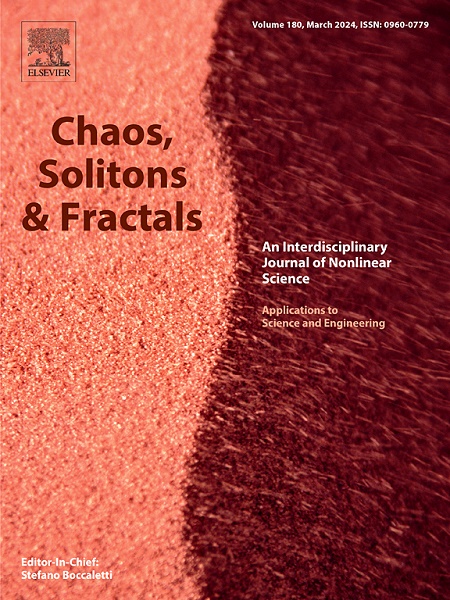Harmony in heterogeneous traffic flow: A lattice hydrodynamic model with perception diversity and predictive effect coordinated by bilaterally controlled CAVs
IF 5.3
1区 数学
Q1 MATHEMATICS, INTERDISCIPLINARY APPLICATIONS
引用次数: 0
Abstract
With the rapid advancement of intelligent network communication and autonomous driving technologies, future highway traffic will be characterized by a heterogeneous mix of Human Driven Vehicles (HDVs), Autonomous Vehicles (AVs) at various automation levels, and Connected Autonomous Vehicles (CAVs). To evaluate the effectiveness of CAVs in mitigating traffic congestion, this paper proposes an extended lattice hydrodynamic model by integrating the concept of “flow control through particles” into mixed heterogeneous traffic flow scenarios. The model incorporates various vehicles' perceptions of upstream traffic conditions based on predictive capabilities. Furthermore, it investigates the impact of CAV Market Penetration Rate (MPR) on the system's critical stability, considering the sensitivity of diverse vehicle operators. Additionally, a car following model with CAV navigation is developed, considering bilateral control to analyze the string stability of the platoon. Through theoretical analysis and numerical simulations, the study demonstrates that the system's stability region expands significantly with increasing prediction horizon, sensing capability, sensitivity, and CAV penetration rate. Moreover, empirical data simulations demonstrate that implementing even a small fraction of the proposed CAV models can significantly reduce traffic congestion and improve overall roadway efficiency.
求助全文
约1分钟内获得全文
求助全文
来源期刊

Chaos Solitons & Fractals
物理-数学跨学科应用
CiteScore
13.20
自引率
10.30%
发文量
1087
审稿时长
9 months
期刊介绍:
Chaos, Solitons & Fractals strives to establish itself as a premier journal in the interdisciplinary realm of Nonlinear Science, Non-equilibrium, and Complex Phenomena. It welcomes submissions covering a broad spectrum of topics within this field, including dynamics, non-equilibrium processes in physics, chemistry, and geophysics, complex matter and networks, mathematical models, computational biology, applications to quantum and mesoscopic phenomena, fluctuations and random processes, self-organization, and social phenomena.
 求助内容:
求助内容: 应助结果提醒方式:
应助结果提醒方式:


